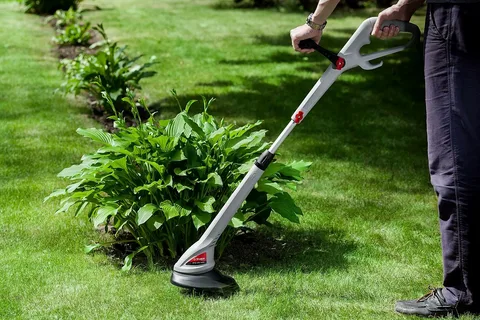String trimmers, also known as weed eaters or weed whackers, have become essential tools for maintaining lawns and gardens. Their design and functionality have significantly advanced over time, making yard work faster and more efficient. This article explores the evolution of the string trimmer: from manual to modern, highlighting key developments and innovations along the way.
Early Beginnings: The Manual Era
The story of string trimmers begins with simple manual tools designed to trim grass and weeds in areas unreachable by lawnmowers. Early garden workers relied on hand shears or scythes—tools that required significant effort and skill. Although effective, these manual tools were time-consuming and physically demanding, especially for larger yards.
The first attempts to mechanize grass trimming led to rudimentary string trimmers, which initially used a spinning string powered by small engines. This marked the beginning of a gradual transformation from purely manual labor to powered assistance.
The Birth of the Motorized String Trimmer
The real breakthrough in the evolution of the string trimmer: from manual to modern came with the introduction of motorized string trimmers in the 1970s. These early models used two-stroke gasoline engines, which provided enough power to cut through thick grass and weeds efficiently.
Motorized trimmers significantly reduced the physical effort required and expanded the trimmer’s use beyond simple garden edges to more complex landscaping tasks. However, the gasoline engines were noisy, heavy, and emitted pollutants, which led to the search for cleaner and quieter alternatives.
Modern Innovations: Electric and Battery-Powered Models
In recent decades, the evolution of the string trimmer: from manual to modern has accelerated with the introduction of electric and battery-powered models. These newer trimmers offer several advantages:
- Lightweight and quieter operation: Ideal for residential areas.
- Environmentally friendly: Reduced emissions and lower noise pollution.
- Ease of maintenance: No need for fuel mixing or engine repairs.
Cordless battery trimmers are especially popular for their portability and convenience, allowing users to move freely without worrying about power cords or fuel tanks.
Advanced Features in Today’s String Trimmers
Modern string trimmers come equipped with various advanced features to enhance user experience and efficiency:
- Adjustable handles and shafts for ergonomic comfort.
- Variable speed controls to manage cutting power.
- Dual-line or even metal blades for different landscaping needs.
- Smart technology integration, such as battery life indicators and brushless motors for longer life and better performance.
These advancements show how far the tool has come, reflecting ongoing innovation in garden care.
Conclusion
The journey of the string trimmer reflects a fascinating progression in gardening technology. From manual scythes and shears to powerful, eco-friendly, and user-friendly electric models, the evolution highlights how innovation can simplify even the toughest tasks. Understanding the evolution of the string trimmer: from manual to modern not only gives us appreciation for the tool but also underscores the importance of continued innovation in outdoor equipment.


